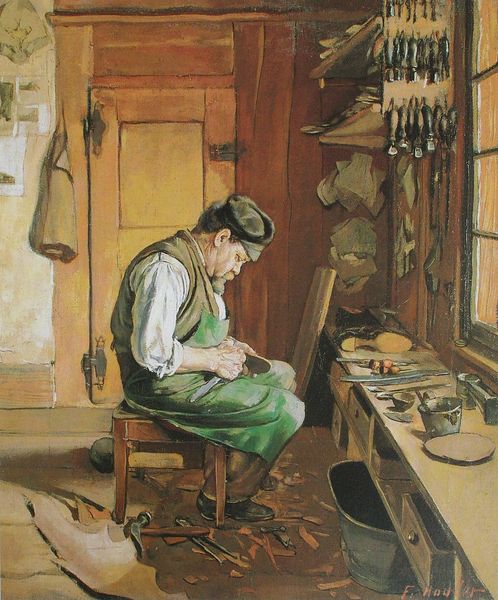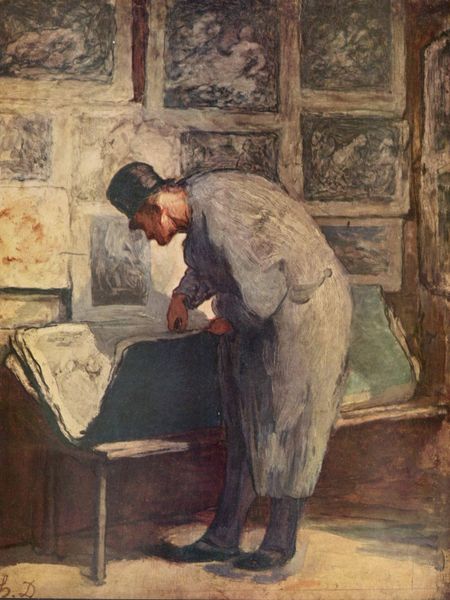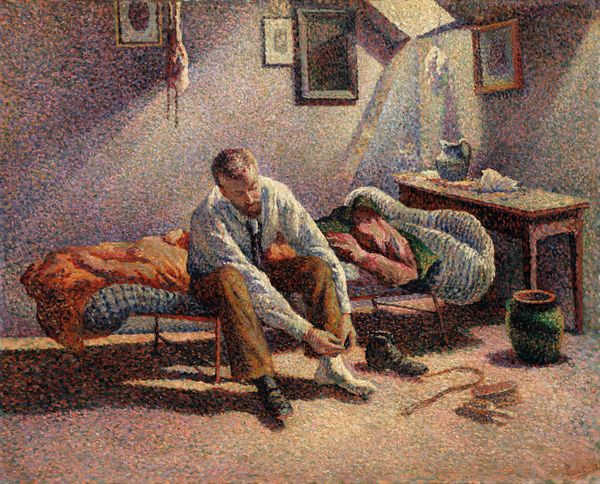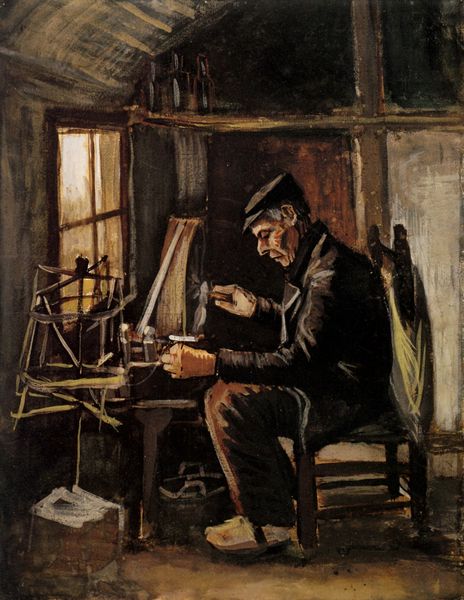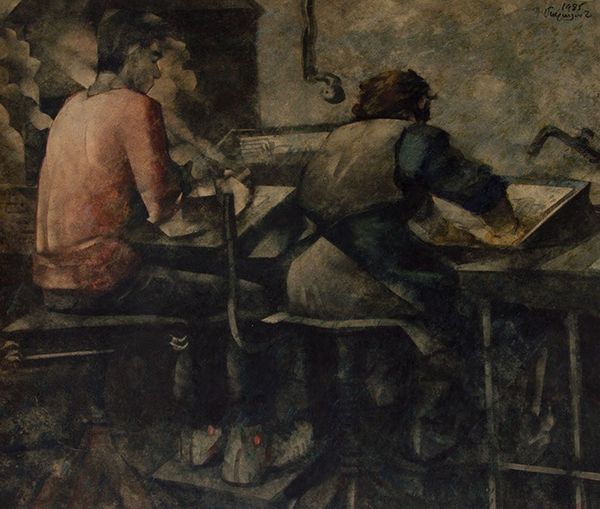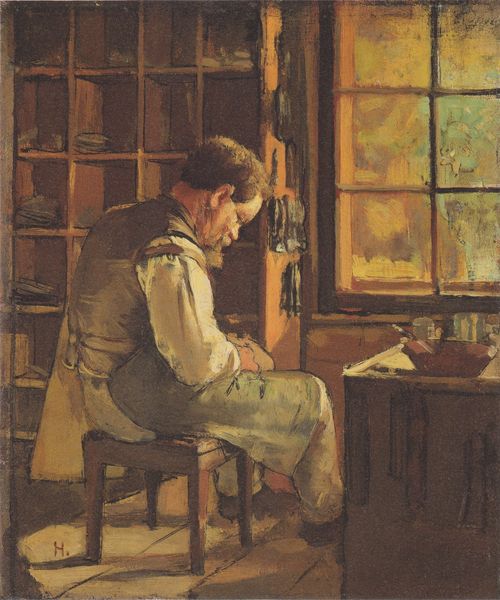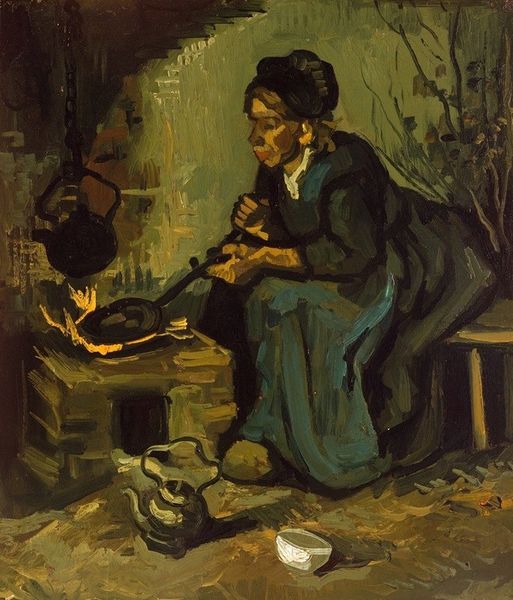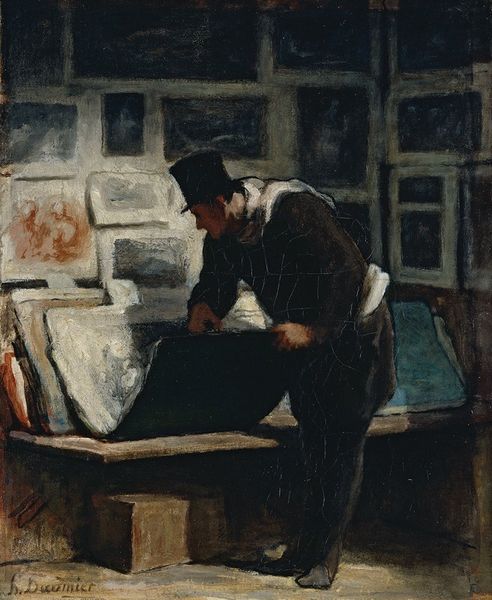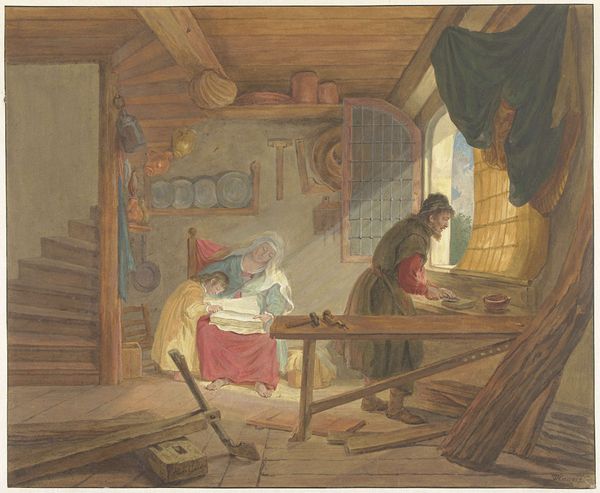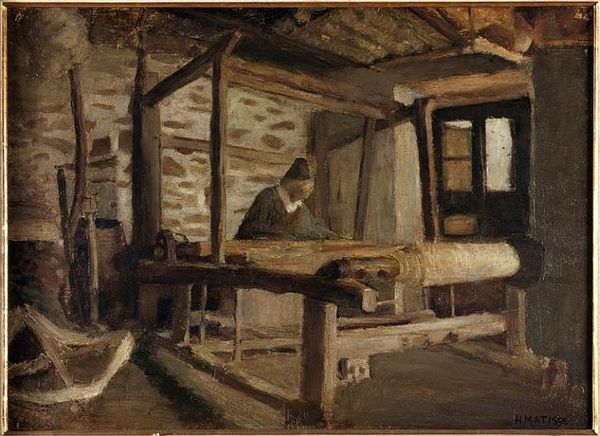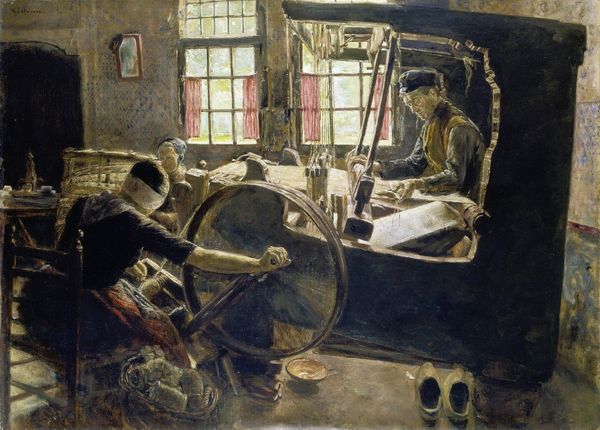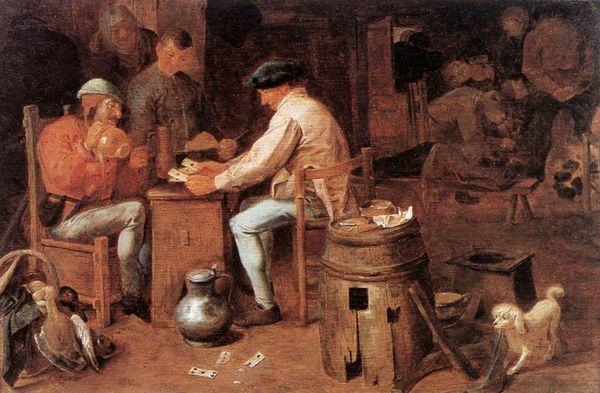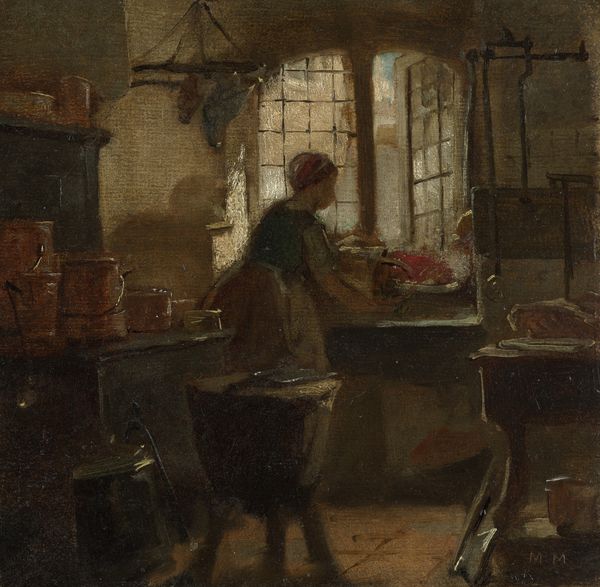
painting, oil-paint
#
portrait
#
painting
#
oil-paint
#
neo-impressionism
#
oil painting
#
intimism
#
genre-painting
#
portrait art
#
fine art portrait
Copyright: Public domain
Curator: Maximilien Luce’s painting, "Man Washing," created in 1887 using oil paint, presents a candid glimpse into a private, perhaps even mundane, moment. Editor: There's an intimacy, but also a starkness. The figure is self-absorbed. I find the composition unsettling somehow, the way the dots of paint build the image, leaving no soft edges. It's like observing something usually unseen. Curator: Luce's application of Neo-Impressionism brings that analytical rigor to what might otherwise be an ordinary genre scene. Consider the socio-political context; Luce was closely associated with anarchist circles. Does this image, depicting a man stripped bare, physically and perhaps metaphorically, resonate with those values? Is he representative of the working class? Editor: The Neo-Impressionist style contributes, for me, to a feeling of internal reflection. Each dab of paint feels like a tiny mosaic piece forming the whole. Note the way the artist used common domestic items. I can read each object around the man, the washbowl, the stool, the discarded jacket, each telling an important symbolic element. Curator: It is the details, I think, that anchor this intimate moment in the broader social realities. Notice how he meticulously captures the light, using these tiny dots. The symbolism goes deeper: the domestic items point toward social circumstances but the vulnerability of the character opens toward intimacy, to create an intimate narrative. How might this challenge established power dynamics when considering Luce's political position? Editor: The mirror hanging on the back wall behind him gives us access to another point of view, a self-reflection maybe, in which both past and present come together in order to let you contemplate on the human conditions that this image implies. It’s as though Luce wants us to pause and examine the meaning of labor, and our own relationships with personal responsibility. Curator: Your focus on symbolic elements enriches my perception; the mirror particularly suggests multi-layered reflections beyond simple actions, pointing to internal contemplation alongside outward performance. Editor: Understanding Luce's choice to use common settings makes you dive deep inside. The symbolism creates echoes that go beyond his Neo-Impressionist technique. Curator: By connecting intimate moments and broad societal narratives, Luce prompts us to re-evaluate the overlooked facets of everyday experience, particularly among marginalized populations. Editor: And by using visual metaphors we contemplate the importance of daily life, our common objects, and a shared memory beyond the social divide, giving us the opportunity to interpret our culture by its objects.
Comments
No comments
Be the first to comment and join the conversation on the ultimate creative platform.
